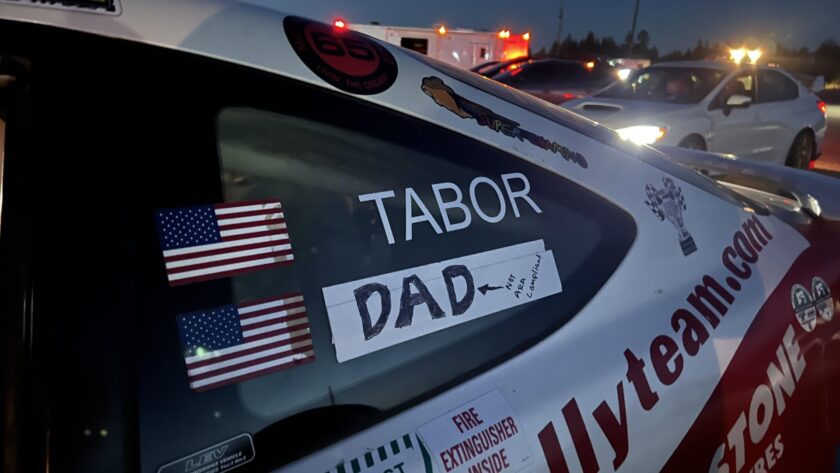no images were found
By: Kevin NeelyIt’s official. Team Barracuda-Bryan Herta Autosport and Dreyer & Reinbold Racing are no longer Lotus powered teams. The official release came from Lotus PR this morning.
“Lotus has taken the decision to reduce the number of cars it runs from five to three for the remainder of the season. As a consequence of this decision, Lotus has made offers to Bryan Herta Autosport LLC and Dreyer & Reinbold Racing LLC to end the agreements with them. Bryan Herta Autosport LLC will not participate in any further races as a Lotus team and Dreyer & Reinbold Racing LLC will race one more time in Brazil next weekend.”
I first reported last week that Team Barracuda-Bryan Herta Autosport elected not to make the trip to Brazil, as they were outside the Top 22 in points. We all sensed that something was rotten in the State of Indy (to alliterate a bit on Mr. William Shakespeare) and that there would be a major shakeup amongst the Lotus teams. As the week progressed, it became clear that two Lotus teams were seeking release from their contracts. One was obviously BHA, as they were not participating in the Brazil race. Speculation on the second team seemed to mostly float towards Dreyer & Reinbold.
After a few days of speculating, today Lotus released the press statement announcing BHA and DRR were released from their contracts with Lotus. Last week, when the Lotus story started breaking, I contacted Olivier Picqenot, the manager of Lotus Racing’s IndyCar program. Here is his statement regarding the rumors (Later to be fact) of teams leaving Lotus…
“I just want to tell you that we don’t breach any contract concerning IndyCar and we don’t have any lawsuit against us. We told the teams that we will not attempt the test in Indy to focus for Long Beach race. The tests organise by IndyCar or private test are not mandatory and we want to do it, the addition of two cars end of February change completely our plan of engines pool and make difficult the start of the season for us, our technical partner EDL and the teams. We are still in a good relation with all the teams we have contracted and we are working together.” – Olivier Picqenot
I specifically asked about rumors that Breach of Contract lawsuits had been filed against Lotus, and that two teams had asked for releases from their agreements. It has come out that the threat of lawsuits was due to the timing of engine receipt from Lotus, pretty much rendering any offseason testing unavailable.
One interesting thing I noted from this statement was the part about the addition of two cars at the end of February to Lotus’ plans. All I can imagine is these two cars were the Dragon Racing entries of Sebastien Bourdais and Katherine Legge. This would explain why they were so hamstrung in Open Testing at Sebring. This leads to asking why was Lotus only prepared to support three cars to start the season? In the engine manufacturer’s agreement for this season, each manufacturer was to be able to support at least 1/3rd of the grid, with no one team supporting more than 40%. If the grid was to be comprised of 26 entries, Lotus would have been contractually obligated to be able to support 8 or 9 entries.
In the end, Lotus only had to support five entries. I can’t help but wonder if one car at Michael Shank Racing and two cars at Newman-Haas were included in Lotus’ count, thus bringing them to the required eight entries. The disturbing fact is it seems Lotus couldn’t even support the five entries they had. It’s recently come out that Lotus engines have been running with temperature safeties on the engine, causing Bourdais and Tagliani’s problems at Long Beach. These temperature safeties, combined with the lack of preseason testing, have combined to relegate Lotus to the back of the grid, sans some inspired driving by Bourdais and Servia.
From today’s press release…
“Lotus was further hindered by unanticipated difficulties caused by the widely reported change of ownership and the subsequent restrictions on resources. To have achieved a top ten position under these circumstances is pretty impressive.”
I think there’s more to this statement than anybody even knows. There have been numerous reports that Engine Developments LTD(Better known as Judd) had to cease production of the Lotus IndyCar engine for two weeks due to failure by Group Lotus to make payments for engine development. With Lotus’ recent announcement of plans to withdraw their Formula One sponsorship, you have to wonder about Lotus’ financial ability to support an IndyCar program. After all, this is the same Group Lotus program withdrawing from the former Renault team, which has a fine history of championship racing and should have no problem attracting money to operate. If Lotus can’t support a program like that, why would they be able to support an IndyCar program?
Lotus’ plan now is to put their eggs into a smaller basket. Also from today’s release…
“Following this review, Lotus is pleased to announce in cooperation with IndyCar that, whilst it remains fully committed to IndyCar in the long term, Lotus has taken the decision to reduce the number of cars it runs from five to three for the remainder of the season. As a consequence of this decision, Lotus has made offers to Bryan Herta Autosport LLC and Dreyer & Reinbold Racing LLC to end the agreements with them. Bryan Herta Autosport LLC will not participate in any further races as a Lotus team and Dreyer & Reinbold Racing LLC will race one more time in Brazil next weekend.
Going forward, Lotus is excited to be working closely with Lotus HVM Racing, the original partner team and Lotus Dragon Racing, who delivered Lotus’ best result so far this season.”
HVM was the first team to sign with Lotus. During the initial testing phases, HVM conducted all the work, with observers from BHA and DRR being present for testing. HVM is the flagship program for Lotus, so it makes sense they would remain. Also, being a smaller organization than both BHA and DRR, I imagine HVM receives a significant benefit from Lotus. Dragon remains because, quite frankly, they don’t have much of a choice. Besides, having a driver like Sebastien Bourdais on the bill to assist with development is a big help. Let us not forget that Bourdais has taken this donkey of an engine to a Top Ten finish, as well as running as high as 2nd place at St. Pete. BHA and DRR were the odd men out, albeit the defending Indianapolis 500 champions and a team with a driver who finished Top 5 in points last season.
no images were found
Now that the odds have been lowered a bit for Lotus, they have no choice but to perform now. With two cars removed from their care, it almost doubles their pool of engines. There is no excuse anymore for Lotus running races with temperature safeties, or no testing away from race weekend. Lotus also has to develop more of a presence in the paddock. On weekends I’ve been at the track, I’ve seen more Cosworth shirts than Lotus shirts. Lotus really needs to step up and prove to both the teams and the fans that they are in this for the long haul. Otherwise, they’ll be written off in the annals of history with other failed European marks who have attempted IndyCar, like Porche or Alfa-Romeo. Basically, it’s put up or shut up time. Which one will Lotus choose?




Sound, well-written analysis. Pulls in a lot of info and organizes it well.
I don’t see Lotus quitting unless the whole company folds. As far as I know, the money is flowing again after the two-week freeze, so what we are seeing is just Lotus being way behind the rest, not being incompetent or having a bad engine. I assume Chevy and Lotus had similar issues, but had the time and testing to solve them before they went racing. Lotus is doing a limited live-racing test program.
This sort of reminds me of Toyota stepping up to WEC manufacturer status and then withdrawing from Spa. A lot of people are slagging off Toyota, but the program is new, was seriously delayed (earthquake) and was never funded to operate at high levels in the first year.
With Lotus the program was underfunded initially and seriously delayed as well. By next year they will need to be competitive or be gone—of course by then Ford or Chrysler might be on board. But this year, Lotus started in a hole and then dug it deeper with the sale of Proton. Can’t get down on them too hard.